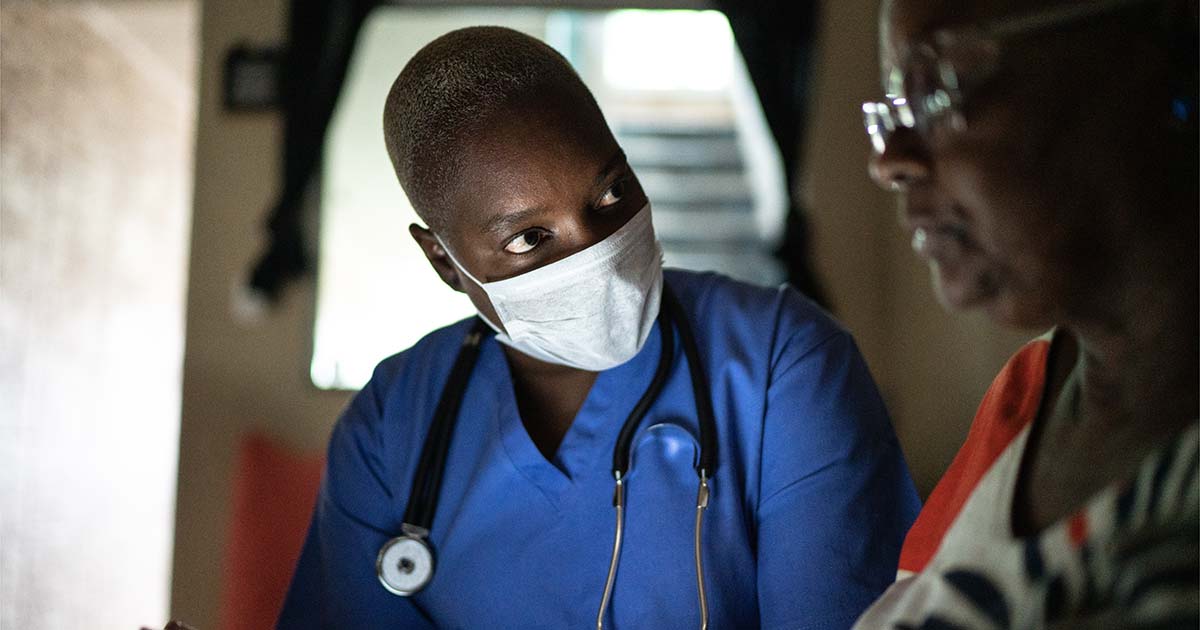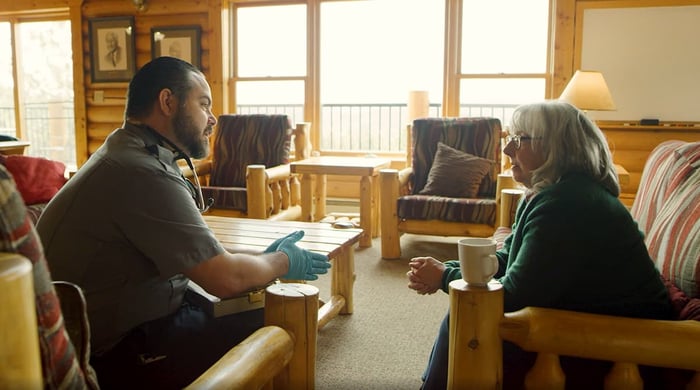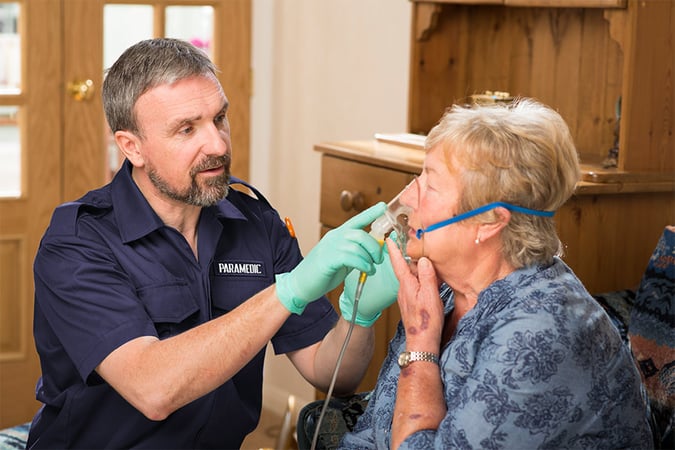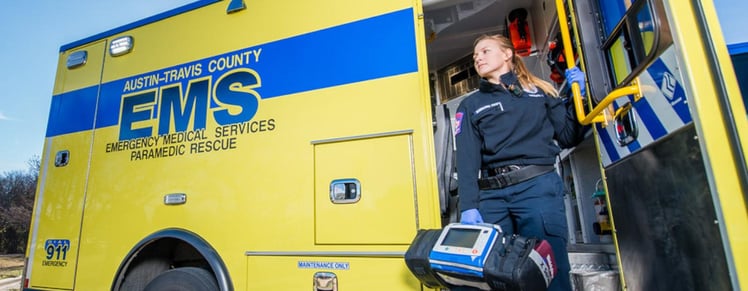Pulsara Around the World - 2025 Recap and January 2026
December Recap After an incredibly busy events year with 102 conferences, trade shows, and sponsorships, December was on the slower side for us, with...

On March 2, 2021, the U.S. Department of Health and Human Services released a report detailing trends in the utilization of Emergency Department services between 2009 and 2018. Between 2009 and 2016, ED rates slowly but steadily increased. During the COVID-19 pandemic, ED volume rates have trended down, but the number of people needing care has not changed. And during COVID surges, open beds have become a precious commodity.
The increased demand on medical providers' time and resources has been met with a particularly intriguing solution involving a newer model of care: community paramedicine.
Rather than using EMS systems solely to treat and transport patients to the ED for assessment and treatment by physicians and nursing staff, community paramedics can provide care for minor conditions and certain chronic illnesses right in the patient's home, or an alternative community setting.

Community paramedicine programs have been shown to reduce the number of patients who are transported to the ED, thereby reducing the burden on both ambulances and ED staff. Simultaneously, these programs improve the patient experience by reducing wait times and providing more personalized care.
Though CP programs have already been successful in significantly reducing the number of patients transported to their local EDs, challenges such as cost, the willingness of medics to participate, the availability of education programs for those potential providers, support from the community, and reimbursement logistics must be thoroughly assessed and understood.
Because buy-in from local EMS professionals is one of the most crucial components of a successful CP program, a 2017 study published in the Western Journal of Emergency Medicine aimed to better understand medics' opinions on community paramedicine programs and the degree to which these EMS professionals would be willing to participate in such a program.
The study evaluated survey responses from 283 licensed EMS professionals who were currently employed by an EMS service that provides coverage to Missouri, Arkansas, Kansas, or Oklahoma. Of those participants, 70% responded that they understood what a CP program entails, 58% indicated that they were likely to attend educational sessions to become a CP, and 75% stated that their communities would likely be in favor of a CP program.

Since then, further studies have been done to support the idea that community paramedicine can greatly benefit communities.
In 2020, the Journal of Health Care for the Poor and Underserved published a study done among current participants in community paramedicine programs that sought to better understand how community paramedics viewed their role and their patients. Their findings showed that community paramedics spoke sympathetically about their patients and had a deeper understanding of the factors that contributed to patients' situations, as well as an awareness of the systemic factors that contributed to the patients' ED overuse. Further, the paramedics expressed frustrations that served to highlight the barriers to health care access for underserved communities.
Ute Pass Regional Health Service District in Teller County, Colorado, has worked to create a robust community paramedicine program, which has seen a great deal of success. They've equipped their medics with telehealth capabilities, and, in partnership with Emergency Medical Specialists, PC, give medics access to live consultations with board-certified emergency physicians.
"We're bringing back the physicians' house call in an extremely powerful way that's never been done before," said James McLaughlin, Director of Ute Pass Regional Health Service District's Community Paramedicine Program. "We've been able to reduce the number of unnecessary high-risk transports to the emergency room. We've been able to reduce the number of patients that are going to the ER. And we've teamed up with public health to give these folks a COVID test right in the comfort of their own home."
Especially in light of the difficulties posed by the COVID-19 pandemic, they've been pleased with the results. When the pandemic hit, Teller County saw a steep dropoff in patients who were willing to be transported to the hospital. According to Dr. Jeremy DeWall, the program has helped reach underserved populations who would otherwise not have received care. “We’re seeing this pilot program actually helping that vulnerable population of people who are afraid or unwilling to go to the hospital, and getting them connected with long-term resources, or at least getting them through their acute situation. It’s worked very well.”
Read the Case Study: 911-INITIATED TELEMEDICINE: Next-Level Patient Care for Rural Colorado
Austin-Travis County practices an expanded form of the Centers for Medicare and Medicaid Services' ET3 program, which is closely related to community paramedicine. They've developed a dynamic variation on community paramedicine that they've dubbed the C4 unit, which stands for the Collaborative Care Communication Center.

In an effort to reduce the burden on the ED, in August of 2021, the C4 unit began focusing its efforts on finding the best pathways of care for low-acuity patients. Paramedics connect with the C4 team via telehealth, and the team acts as a clearinghouse of resources to help get patients whatever they need—whether that involves community health resources, transport to an alternative facility, or a telehealth consultation with a physician or mental health provider. Commander Steve White described the process: “When crews contact the C4 and we work through this process, we get them whatever solution that they need for their problem: whether it's social services, medications, or a telehealth visit. Not only are we taking the load off the hospital by finding alternative transports and treatments for these patients, but we're also saving the system countless hours in that transport, hospital turnaround, and return to district times.”
Commander White and Dr. Carlos Navarro recently discussed their thoughts on how the program works in the webinar Force-Multiplier Patient Care. You can watch the full webinar here.
Over the past few years, community paramedicine has become quite popular among EMS agencies seeking to more deeply understand and care for the needs of their communities. Community paramedicine can act as a force multiplier, allowing fewer medics to do more with less. And better yet, CP programs can help medics provide better, more comprehensive care for their patients. If the thoughts of those currently practicing community paramedicine are any indication, the program could become a prominent part of the identity of EMS.
Editor's Note: This post was originally published in April 2017 and has been updated for accuracy and comprehensiveness.
Pulsara is helping with COVID-19 management by helping mitigate patient surge, streamlining patient transfers, minimizing exposure, and more. Learn more about COVID-19 + Pulsara here.

December Recap After an incredibly busy events year with 102 conferences, trade shows, and sponsorships, December was on the slower side for us, with...

Editor's Note: In July 2025, EMS1 and Fitch & Associates released their annual EMS trend survey, What Paramedics Want, proudly sponsored by Pulsara....
![[PRESS RELEASE] Published Research Finds Up to 31% Faster STEMI Treatment Times in Rural Hospital Setting with Pulsara](https://www.pulsara.com/hubfs/_1_website-page-blog-assets/pulsara-hosp-teams-assign-cardio-stemi-rn-1200x701.jpg)
Published research shows how using Pulsara, alongside standardized field activation and a focus on stakeholder relationships, improves STEMI care and...